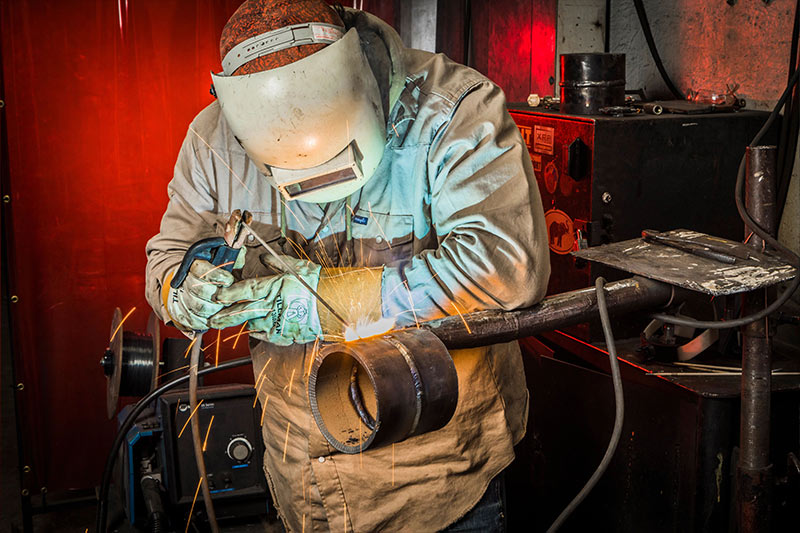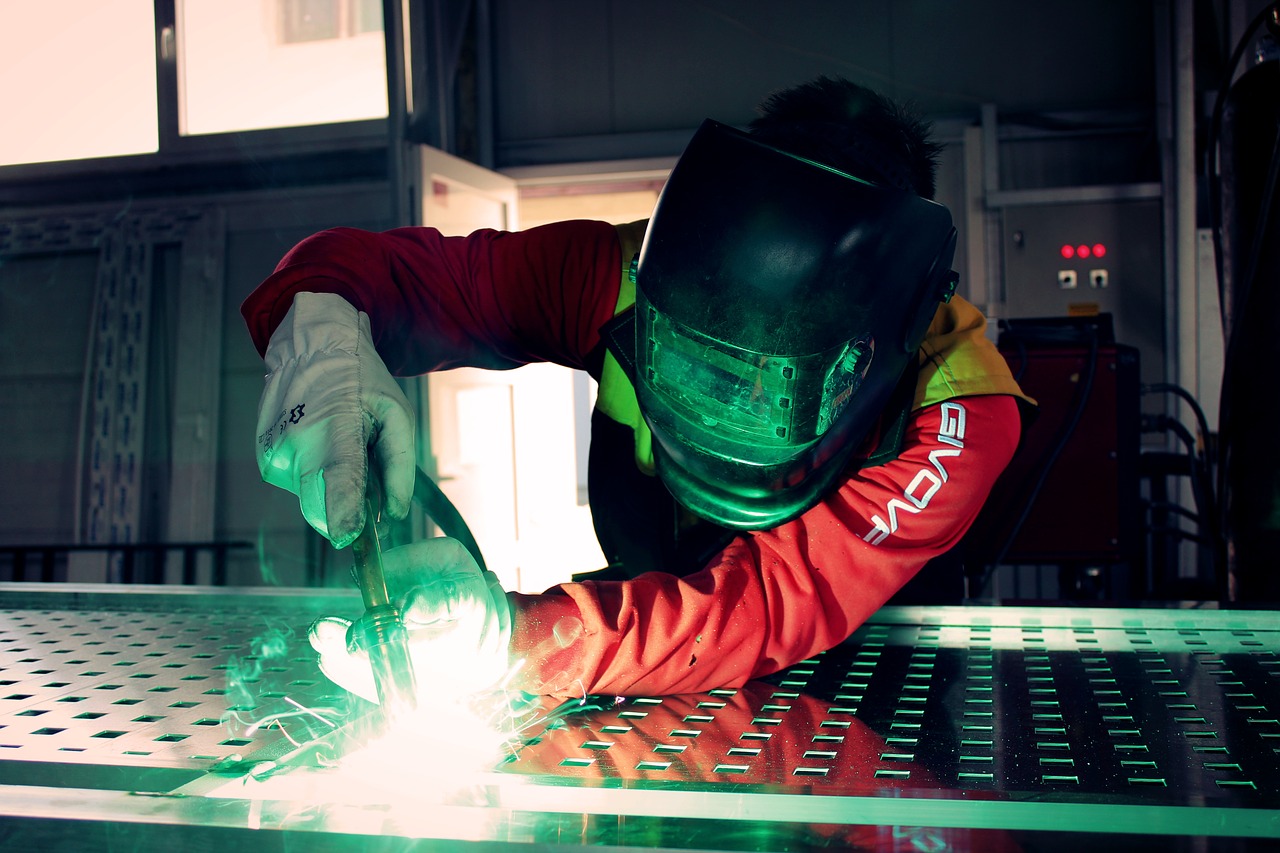Technical breakdown at welding penetration issues and Montana Mobile Welding and Repair Belgrade’s fixes
Common Welding Fixing Issues and Exactly How to Address Them Properly
Welding repair work typically encounter a series of concerns that can jeopardize the honesty of the last product. Typical problems include inadequate infiltration, porosity, and misalignment, to name a few. Each problem provides unique obstacles that call for details approaches for resolution. Understanding these concerns is crucial for welders intending to boost their abilities and end results. This discussion will discover these common welding fixing issues and effective techniques to address them.
Inadequate Infiltration
Insufficient penetration happens when the weld metal stops working to totally fuse with the base product, causing weak joints and possible structural failings. This problem often comes from inadequate warm input, incorrect electrode angle, or inappropriate welding speed. Welders might come across poor infiltration due to a mistake of the needed parameters for a certain material density or kind. In addition, contamination on the base material's surface can hinder efficient bonding, worsening the problem. To address inadequate penetration, welders must assure suitable settings on their tools and preserve a tidy work surface area. Normal examination of welds is suggested to recognize any type of deficiencies early, enabling prompt improvements and the avoidance of endangered architectural stability in welded assemblies.
Porosity
Porosity is a typical issue in bonded joints that shows up as little gas bubbles trapped within the weld metal. This issue can jeopardize the stability of the weld, leading to decreased toughness and potential failing under stress. Belgrade Fabrication. Porosity typically arises from contamination, wetness, or inappropriate welding strategies, which enable gases to run away into the molten weld swimming pool. To resolve porosity, welders should guarantee correct surface preparation, maintain a clean working setting, and use appropriate welding parameters. Additionally, selecting the appropriate filler material and protecting gas can reduce gas entrapment. Normal examination and screening of welds can aid recognize porosity early, ensuring timely rehabilitative activities are taken, thereby preserving the high quality and reliability of the bonded structure
Imbalance
Imbalance in welding can develop from different variables, including inappropriate arrangement and thermal expansion. Recognizing the origin is crucial for efficient resolution. Numerous adjustment strategies are offered to realign parts and assure architectural honesty.
Sources of Misalignment
Welding misalignment commonly originates from a selection of underlying problems that can compromise architectural honesty. One key cause is improper fit-up of parts prior to welding, which can result in gaps and irregular surface areas. Variants in thermal development during the welding process can additionally lead to distortion, especially if the products being signed up with have different coefficients of development. In addition, poor securing and fixturing may fall short to hold parts firmly in position, causing movement during welding. Improperly conserved equipment, including welding equipments and tools, may present variances in the weld bead, more contributing to imbalance. Driver error, stemming from inadequate training or experience, can also play a significant role in developing misaligned welds.

Modification Strategies Readily Available
Dealing with misalignment successfully requires a mix of rehabilitative methods customized to the specific issues available. One typical technique is making use of jigs or components to hold components in the correct setting throughout welding, guaranteeing consistent positioning. Furthermore, preheating the materials can help in reducing distortion and enhance fit-up. For substantial misalignment, mechanical adjustment strategies, such as utilizing hydraulic jacks or clamps, can be utilized to correct the setting prior to welding. Post-weld warmth therapy might also be essential to alleviate stress and anxieties brought on by misalignment. Cautious evaluation and modification during the setup phase can stop imbalance concerns from becoming considerable problems, promoting a smoother welding procedure and improving general architectural honesty.
Distortion
Distortion is a common challenge in welding that can arise from different aspects, including unequal heating and air conditioning. Recognizing the root causes of distortion is vital for applying reliable prevention methods. Addressing this problem not only improves architectural honesty yet likewise improves the total quality of the weld.
Sources of Distortion
When based on the intense warmth of welding, materials frequently go through adjustments that can result in distortion. This phenomenon primarily emerges from thermal development and tightening during the welding procedure. As the weld location warms up, the material expands; upon air conditioning, it gets, which can produce inner anxieties. Additionally, irregular heating across a workpiece can exacerbate these tensions, leading to warping or flexing. The type of material additionally plays a considerable duty; metals with differing thermal conductivity and coefficients of expansion may respond in different ways, resulting in unpredictable distortions. Moreover, inadequate joint layout and poor fixturing can add to imbalance throughout welding, enhancing the chance of distortion. Comprehending these causes is vital for reliable welding repair service and prevention strategies.
Prevention Techniques
Reliable avoidance methods for distortion throughout welding concentrate on managing warmth input and ensuring appropriate joint style. Maintaining a constant warm input assists to lessen thermal development and contraction, which can result in distortion. Making use of strategies such as pre-heating the workpiece can also minimize the temperature slope, advertising consistent heating. Furthermore, picking appropriate joint designs, such as T-joints or lap joints, can enhance stability and decrease anxiety focus. Executing correct fixturing to safeguard the workpieces in position additionally aids in maintaining alignment during the welding process. Ultimately, staggered welding sequences can distribute warm a lot more uniformly, preventing local distortion. By applying these methods, welders can substantially reduce the possibility of distortion and improve the overall high quality of their welds.
Splitting
Splitting is a typical problem come across in welding repair services, commonly resulting from different variables such as incorrect air conditioning rates, product selection, or poor joint prep work. The occurrence of fractures can significantly jeopardize the integrity of the weld, bring about possible failures during procedure. To address this problem, welders need to first evaluate the root triggers, guaranteeing that products are suitable and properly chosen for the details application. Additionally, regulating the air imp source conditioning price throughout the welding process is vital; fast air conditioning can generate stress and anxiety and result in breaking. Appropriate joint layout and preparation likewise contribute to minimizing the risk. Executing these strategies can enhance weld high quality and durability, ultimately decreasing the chance of cracking in ended up weldments.

Insufficient Blend
A considerable concern in welding fixings is incomplete combination, which happens when the weld metal does not sufficiently bond with the base product or previous weld passes - Montana Mobile Welding and Repair Welding. This defect can bring about weak points in the joint, potentially compromising the integrity of the bonded framework. Elements adding to incomplete combination consist of not enough warm input, improper welding technique, and contamination of the surface areas being joined. To resolve this issue properly, welders must guarantee proper pre-weld cleansing and surface prep work, along with adjust their welding specifications to accomplish appropriate penetration and blend. Regular assessment during the welding process can likewise aid recognize insufficient blend early, permitting timely restorative measures to boost the total top quality of the weld
Overheating
While welding repair services read this can improve structural stability, overheating presents a considerable challenge that can bring about material degradation. Extreme warm throughout welding can alter the mechanical homes of metals, resulting in minimized toughness, enhanced brittleness, and warping. This sensation is particularly critical in high-stress applications where architectural reliability is paramount. Determining getting too hot can entail visual examinations for staining or distortion, as well as checking temperature during the welding process. To mitigate the risks connected with overheating, welders should employ suitable methods, such as regulating heat input, changing travel speed, and utilizing ideal filler products. Furthermore, implementing pre- and post-weld warm treatments can aid bring back product homes and improve the overall top quality of the repair work, ensuring lasting performance and safety.
Regularly Asked Inquiries
What Are the Typical Indicators of a Welding Problem?

Just How Can I Test My Welds for High quality?
To evaluate welds for quality, one can make use of aesthetic examinations, ultrasonic screening, and radiographic techniques. Each strategy ensures structural stability, recognizes flaws, and verifies adherence to defined criteria, eventually improving the reliability of the welded joints.
What Safety and security Precautions Should I Take While Welding?
When welding, one should focus on safety and security by putting on appropriate individual safety devices, ensuring correct air flow, protecting flammable materials away, keeping a tidy office, and knowing environments to avoid injuries and crashes.
Can I Repair a Weld Without Redesigning the Entire Joint?
Fixing a weld without renovating the whole joint is feasible, relying on the damage (Montana Mobile Welding and Repair Belgrade Welding). Methods such as grinding, adding filler product, or using a welding procedure can successfully resolve certain imperfections while protecting the surrounding framework
What Tools Are Vital for Reliable Welding Fixes?
Necessary devices for reliable welding repair work include a welding machine, cable brush, mill, protective gear, clamps, and filler materials. Each device plays an important duty in making sure top quality and security during the repair process. Porosity normally develops from contamination, wetness, or incorrect welding strategies, which allow gases to escape into the liquified weld pool. Improperly maintained devices, consisting of welding devices and tools, might present variances in the weld bead, further adding to imbalance. When subjected to the extreme warmth of welding, materials typically go through modifications that can lead to distortion. Breaking is an usual issue run into in welding repair work, often resulting from numerous elements such as inappropriate cooling prices, product choice, or insufficient joint prep work. A considerable problem in welding repair work is insufficient combination, which takes place when the weld steel does not adequately bond with the base material or previous weld passes.